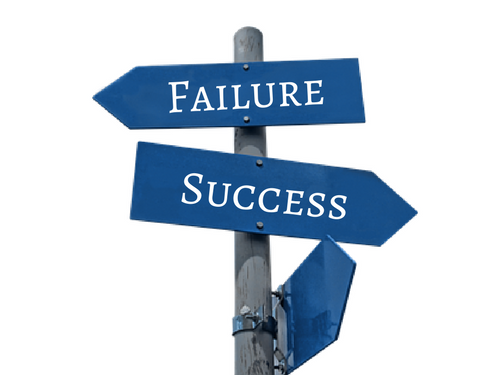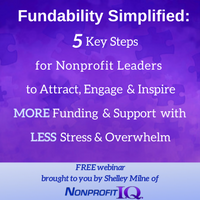Not surprisingly, most nonprofit leaders have so much on their plate and are constantly being sidetracked by things that are NOT leading them toward their goals. So often, nonprofit leaders and their teams are constantly battling the issues that crop up, that they fail to actually plan for SUCCESS. It’s no wonder that burnout is such an enormous problem in our industry.
If you typically operate in a perpetual state of reactivity and you’re not achieving your goals as fast as you’d like… or maybe you don’t even have goals… then it’s time to make some changes. You can decide to flip that switch from constantly having to react to the problems that “befall” your organization or you can choose to a much more proactive approach and actually plan for success. It’s your choice. Success isn’t about luck and it doesn’t just happen by accident.
Success is a result of purposeful planning, consistent action-taking and accountability.
Problem #1: Operating in Crisis Mode

Reactive nonprofits operate primarily in crisis mode. They make changes in response to problems and crises, always trying to fix and run away from problems rather than proactively plan from a position of strength and purposeful change. All too often, they ignore danger signs, inviting problems that could have potentially been prevented to fester and grow. With proper planning and communication, this is an easily solvable issue.
Problem #2: Status Quo Leadership
The cartoon on the right represents what I call the “status quo mentality” and unfortunately, it represents why it is that so many nonprofits in the U.S. fail. This type of thinking is representative of a huge problem throughout the nonprofit industry and it’s why most nonprofits never achieve the level of success they know is possible. Boards need to be taught how to proactively plan in partnership with staff respond appropriately to changes, both good and bad.

All too often, an organization’s leadership waits until funding has nearly dried up and employee and/or board morale is at critically low levels before they’re ready to act and make any real changes. Please hear me when I tell you that the status quo, or reactive mindset, will kill your organization! I’ve seen it over and over again – but you CAN turn it around!
Reactive vs. Proactive Nonprofits
When leaders operate in a perpetual state of reactivity, they’re inadvertently setting themselves and their organization up for failure. Why? They see only problems and obstacles instead of opportunities for growth and positive change. Below are some common characteristics of reactive organizations. See if you notice any of these in your own organization. If so, it’s time to have some frank discussions amongst your leadership team to make some simple shifts.
Reactive Nonprofits:
- Focus on problems instead of solutions
- Have staff and/or board members who are disengaged, stressed out, and unable or maybe just unwilling to help
- Fail to prioritize staff/board training and professional development
- Don’t have clearly defined goals, strategy and an action plan that engages the right people to the right tasks at the right times to produce the desired outcomes
- Lack clear policies to prevent potential challenges, concerns, or conflicts for staff, board members, funders and even clients/customers/beneficiaries
- Wait until right before (or even after) a grant or other funding source has dried up to seek new or different funding sources for programs or operational support
- Do not communicate goals, successes or challenges with their stakeholders
Proactive leaders and their organizations don’t wait for circumstances to dictate their next moves. Instead, they focus on continuous self-improvement. I’m sure you’ve heard Benjamin Franklin’s famous quote:

If you want to survive and thrive in this present funding environment, you need to shift into proactive mode and PLAN for success.
Proactive Nonprofits:
- Focus on solutions rather than problems
- Continually hone performance in all areas
- Tend to the well-being of their people (staff, board, partners, clients/customers, volunteers and supporters), both personally and professionally
- Has a shared vision for what success looks like and values to guide their decisions
- Develops a strategy and action plan to take them from where they are now to where they want to be both short-term and long-term
- Engage and inspire their people to be part of the solution to the challenge or problem their organization is trying to solve
- Communicate effectively with their stakeholders, keeping them informed of all important developments and plans
Look at the two lists above and think about which type of organization you’d prefer to be involved with. Which of these two lists does your nonprofit look more like? If your answer is the first list (Reactive), but you’d prefer to be much more like the second (Proactive), don’t worry. The good news is that it’s never too late unless and until you give up.
There’s hope and I can help. Join me for my upcoming webinar, Fundability Simplified: 5 Key Steps for Nonprofit Leaders to Attract, Engage & Inspire MORE Funding and Support for Your Nonprofit with LESS Stress & Overwhelm. Sign up here and we’ll notify you of the next training.



